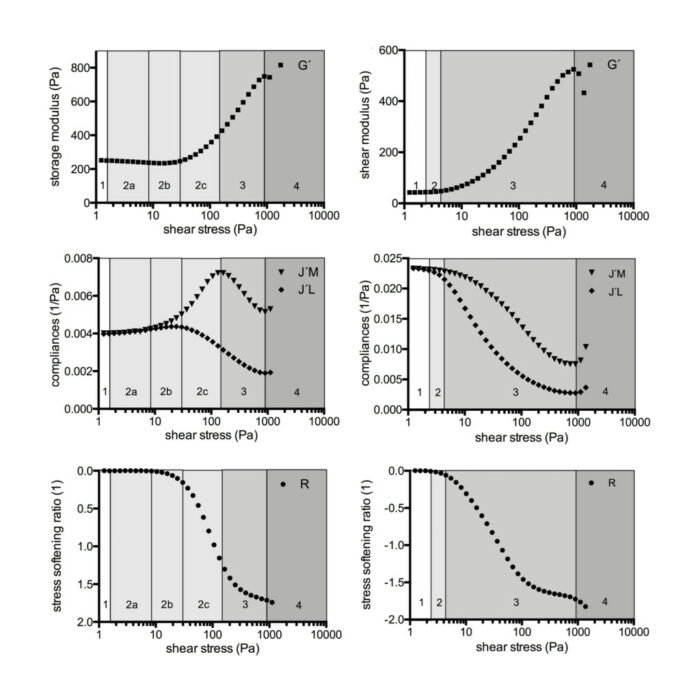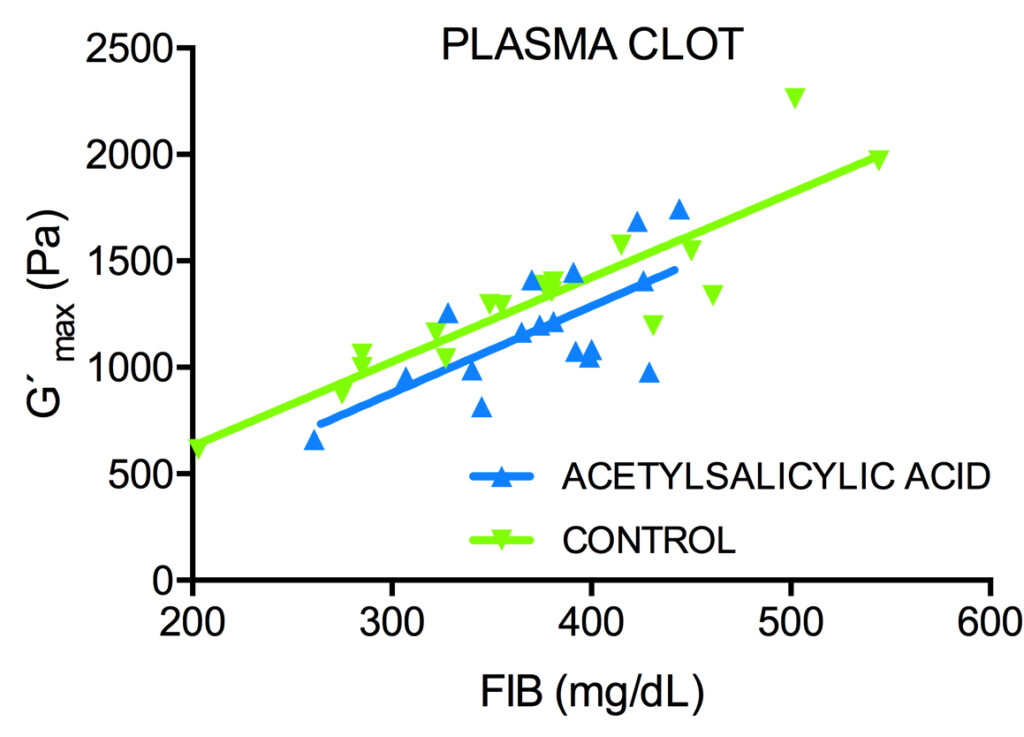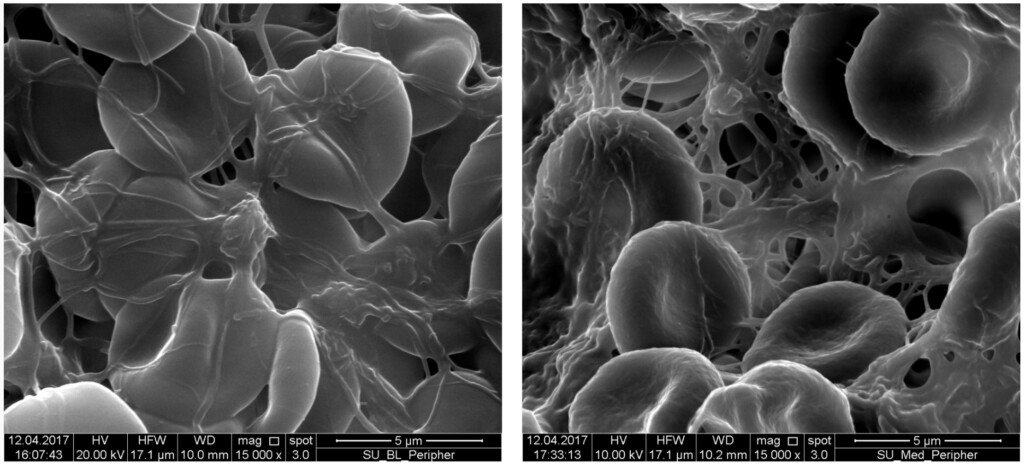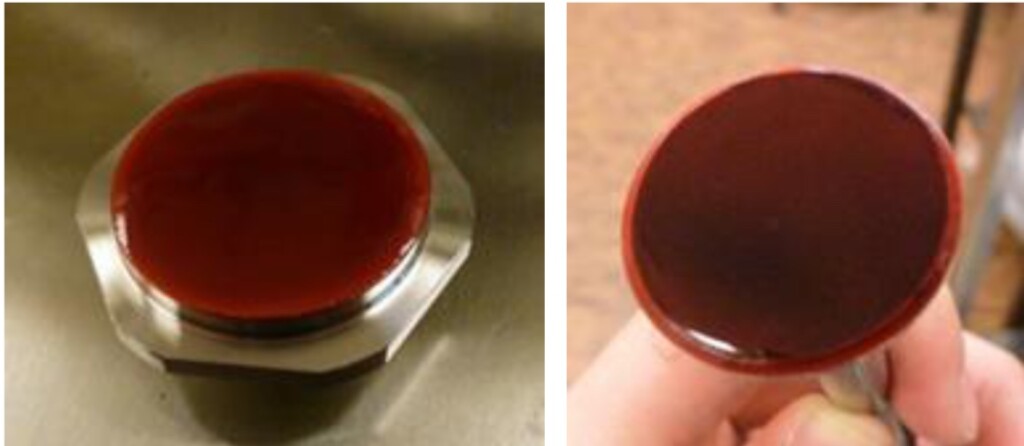
Fibrin networks show strain hardening, Mullins effect, and nonlinear stress-relaxation. This rich mechanical response can be accessed by rheometry. The elaborated LAOStress protocol1 can also identify amyloidic fibrin fiber networks2. It translates well to other gels that contain fibers, such as collagen hydrogels with or without embedded cells3,4.
Our current interest turned on the influence of diverse fibrinogens in the clot behavior. To examine this, we again use the comparative approach. We have shown that rat clots – based on the dense fiber meshwork – do not shear-stiffen but only yield when exposed to large shear stress amplitudes5. We have also found that clots generated from cow and chicken plasma are not only stiffer than comparable clots from other species (human, pig, horse), but can also show double yielding. As these results are not yet published, please contact us to find out more.
Related references:
1 U Windberger*, J Läuger* (2020). Blood clot phenotyping by rheometry: platelets and fibrinogen chemistry affect stress-softening and-stiffening at large oscillation amplitude. Molecules 25 (17), 3890
2 JM Nunes, T Fillis, MJ Page, C Venter, O Lancry, DB Kell*, U Windberger*, E. Pretorius* (2020). Gingipain R1 and lipopolysaccharide from Porphyromonas gingivalis have major effects on blood clot morphology and mechanics. Frontiers in Immunology 11, 1551
3 F Millesi, S Mero, L Semmler, A Mann, A Rad, S Stadlmayr, A Borger, P Supper, M Härtinger, L. Ploszczanski, U Windberger et al. (2023). Systematic Comparison of Commercial Hydrogels Revealed That a Synergy of Laminin and Strain-Stiffening Promotes Directed Migration of Neural Cells, ACS Appl Mater Interfaces 15 (10), 12678-12695
4 S Rohringer, K Schneider, G Eder, P Hager, M Enayati, B Kapeller, A Kiss, U Windberger et al. (2022). Chorion-derived extracellular matrix hydrogel and fibronectin surface coatings show similar beneficial effects on endothelialization of expanded polytetrafluorethylene vascular grafts, Materials Today Bio, 14: 100262
5 U Windberger, V Glanz, L Plosczcanski (2022). Laboratory Rat Thrombi Lose One-Third of Their Stiffness When Exposed to Large Oscillating Shear Stress Amplitudes: Contrasting Behavior to Human Clots. Int J Translational Medicine, 2, 332–344. https://doi.org/10.3390/ijtm2030026


